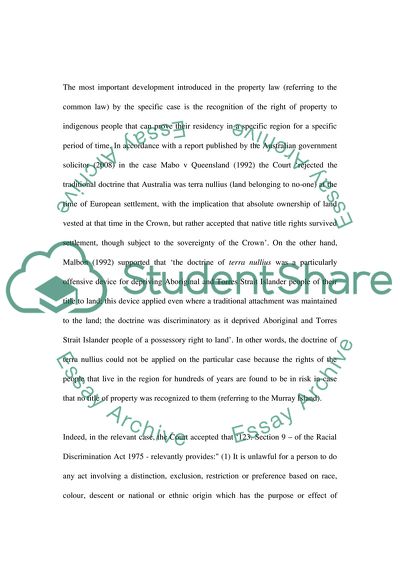Cite this document
(The Recognition of the Right of Property Case Study - 1, n.d.)
The Recognition of the Right of Property Case Study - 1. https://studentshare.org/law/1712213-locke-would-have-said-rightly-that-the-forms-of-indigenous-land-use-that-were-in-issue-in-mabo-v-queensland-1992-did-not-constitute-ownership-discuss
The Recognition of the Right of Property Case Study - 1. https://studentshare.org/law/1712213-locke-would-have-said-rightly-that-the-forms-of-indigenous-land-use-that-were-in-issue-in-mabo-v-queensland-1992-did-not-constitute-ownership-discuss
(The Recognition of the Right of Property Case Study - 1)
The Recognition of the Right of Property Case Study - 1. https://studentshare.org/law/1712213-locke-would-have-said-rightly-that-the-forms-of-indigenous-land-use-that-were-in-issue-in-mabo-v-queensland-1992-did-not-constitute-ownership-discuss.
The Recognition of the Right of Property Case Study - 1. https://studentshare.org/law/1712213-locke-would-have-said-rightly-that-the-forms-of-indigenous-land-use-that-were-in-issue-in-mabo-v-queensland-1992-did-not-constitute-ownership-discuss.
“The Recognition of the Right of Property Case Study - 1”. https://studentshare.org/law/1712213-locke-would-have-said-rightly-that-the-forms-of-indigenous-land-use-that-were-in-issue-in-mabo-v-queensland-1992-did-not-constitute-ownership-discuss.


